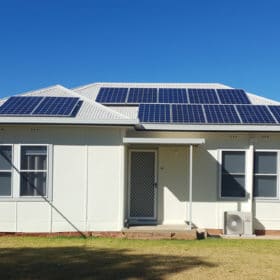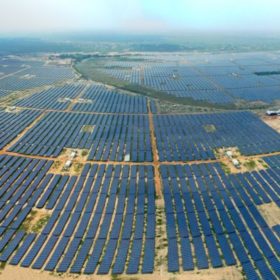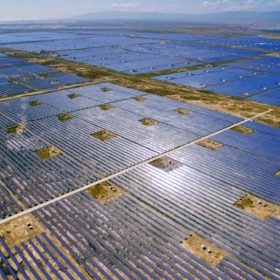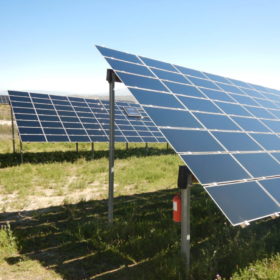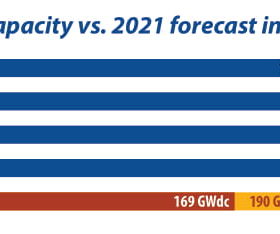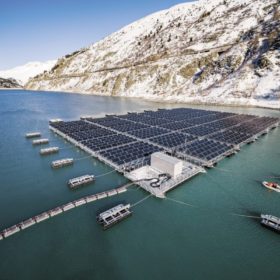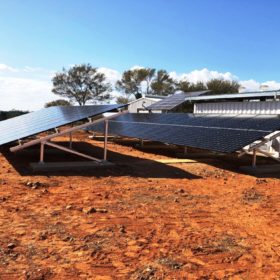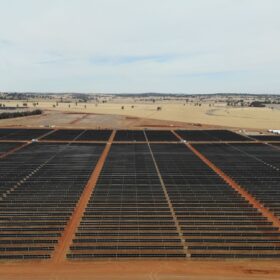Sunny WA town locked out of solar market finally has hosting capacity added
Broome, a coastal town on Western Australia’s north, has barely any rooftop solar – though not for lack of interest. In fact, local residents were so hungry to install solar, they exhausted the state government’s 900 kW allocation of additional hosting capacity by mid-morning.
SA Water deploys AI-powered drone technology to monitor its vast solar assets
SA Water, one of the largest water utilities in Australia and most ambitious when it comes to renewable energy, has partnered with aerial solar inspection and data analysis company, Above, to monitor the performance of its 360,000+ solar panels.
India could add 8.5 GW of solar in FY2022
Solar capacity addition in the fiscal year 2021-22 will surge, led by a strong project pipeline. Tariffs will go up amid rising module prices but will remain competitive at below INR 3/kWh (US$ 0.040/kWh).
‘Historic’ 50 GW renewable hydrogen hub proposed for WA
The proposed mega-project would be the world’s largest renewable hub if realised, with a massive 50 GW of solar and wind being used to produce either 3.5 million tonnes of green hydrogen or, alternatively, 20 million tonnes of green ammonia yearly. The $100 billion Western Green Energy Hub, as its called, is being proposed by two of the same companies behind the 26 GW Asia Renewable Energy Hub, which last month had its environmental approvals rejected by the federal environment minister.
Risen Energy reveals first in small-scale solar strategy
Better known for its large-scale exploits, global solar module supplier and project developer Risen Energy Australia has lodged a development application to build a 5 MW utility-scale solar PV farm at Wagga Wagga in southern New South Wales.
China’s solar PV demand could ‘effortlessly’ surpass 100 GW in 2022 as production overcapacity predicted
According to Asia Europe Clean Energy (Solar) Advisory Co. Ltd, demand for solar PV in China could “effortlessly” surpass 100 GW in 2022, following a year of “flat” demand in 2021. It adds that a “massive overcapacity” situation in the production sector is looming. Meanwhile, the distributed solar PV market is on track for huge growth, with potential for annual demand to reach upwards of 20 GW+ from next year.
When does revamping pay off?
With projects in many PV markets ageing past the 10-year mark – with major leaps in technology having occurred in that time – revamping is a popular topic among asset owners. Pv magazine spoke with Asier Ukar, general manager of the Spanish subsidiary of German testing company PI Berlin, to uncover the benefits of revamping PV projects with new components and also to examine the challenges and risks involved.
Sunday read: Firm foundations on shifting sands
Unprecedented capacity expansions and massive technology changes, all happening at a frantic pace, signal that PV is entering the terawatt era. However, challenges in supply and demand imbalances across the value chain, combined with emerging technical and quality risks, require detailed analysis and due diligence from buyers to avoid pitfalls, according to George Touloupas, Joseph Johnson, and Aditya Vardhan from Clean Energy Associates.
Saturday read: Floating up to standard
Floating PV is a growing market, especially in Asian countries with land pressures. However, like many promising niches, it is growing faster than the standards surrounding it. With installed floating PV capacity set to double in 2021, a raft of various and sometimes competing standards are being floated, but the question remains – what is truly the best way forward?
State government opts for Australian-made modules in solar solution
Adelaide-based module maker Tindo Solar has notched a win for the Australian manufacturing sector, delivering the panels for a $2.4 million solar PV and battery energy storage program rolled out by the Queensland government.
